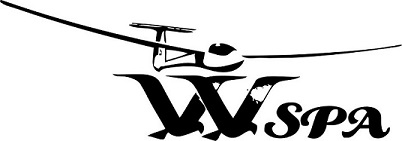Written By: Ishitha Arekapudi
Earning your glider rating starts with passing the FAA Knowledge Exam, a significant milestone in your aviation journey. When I took my written exam at 14 years old, I used ASA Prepware to study and scored a 96%. Later, I used the same methods for my airplane exam and scored a 98%. With the right approach, you can do the same! I was terrified I wouldn’t pass, and you may be thinking the same thing. I had never studies aviation material before and felt extremely overwhelmed. However, the trust you have in your self is essential to make your dreams become a reality. I wanted to share some of the tools and ways I used to study efficiently, increase your knowledge, and prepare for your oral exam at the same time.
1. Start with an Initial Test
Before going into full study mode, take a practice exam in ASA Prepware. Using Prepware is what worked well for me, however this is not endorsed at all and if you feel like this method of studying doesn’t work for you, try something else! Not everyone’s learning methods are the same, and understanding what suits you best is crucial. If you do choose to do this though, it would help highlight your strengths and, more importantly, the areas that need work. Don’t worry if your first score is low—think of it as your personal starting point. I know for certain that the score I initially got was no where near passing! Practice will make everything better, and slowly as your confidence rises, your scores will too.
2. Target Your Weak Spots
Once you know where you need improvement, focus your studying on those topics. Use Prepware’s custom test feature to generate quizzes on specific areas, reinforcing the concepts that need extra attention and use the Glider Flying Handbook to read about each topic in depth. If you don’t understand it the first time, try watching a few videos, having your flight instructor explain it to you, or annotate your notes.
3. Drill Practice Tests Until You’re Consistently Scoring High
Taking full-length practice exams regularly is so helpful, and aiming for scores in the mid to high 90s before scheduling your real test will help you significantly. I have found that Prepware’s database is extremely similar to the actual test, and so you won’t need to find an abundance of outside sources. However, this isn’t just about memorization, you want to fully understand the material. That knowledge will prove essential during your oral exam and real-world flying experiences.
4. Supplement with Additional Resources
ASA Prepware is a great tool, but don’t stop there. Read the Glider Flying Handbook, watch videos on harder topics like airspace and VOR navigation, and talk through difficult concepts with your instructor or other pilots.
5. Take the Test When You’re Ready, Not When You’re Rushed
The biggest piece of advice my flight instructor gave me was that you need to take the test on your own time. If you’re not consistently scoring above 80% to 90% on practice tests, don’t rush into the real thing. If you are aiming for a 70%, consistently get above an 80% first and if you are aiming for at least 90%, try getting close to 100% on practice exams. Rescheduling is always an option, and it’s better to wait until you’re fully confident in your knowledge.
Studying for the written test might feel overwhelming at first, but trust in yourself and the process. Every pilot starts somewhere, and this is just one step in your soaring journey. It may feel like the hardest thing in the world, but it truly is worth the time and effort you put into it. Stay persistent, keep learning, and before you know it, you’ll be using this knowledge in the cockpit!


